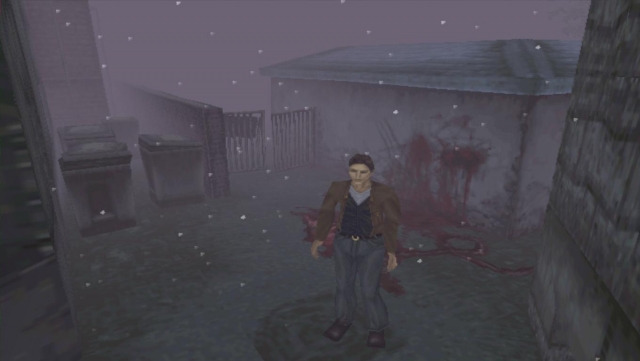
Fixed Camera Angles - Horror's Greatest Restriction
Since the mid-2000s, fixed camera angles in horror games have mostly gone the way of the dodo. The reason for this should be pretty obvious: fixed camera angles almost make the infamous “tank control scheme” a necessity, and as developers grew accustomed to implementing intuitive camera controls into 3D titles, it was a perspective that began to feel increasingly like a relic of the past. With that being said, I still think there’s a good amount of merit to the fixed camera perspective in horror games after recently revisiting the original Resident Evil, and I feel like seeing it return in a modern landscape could bring some much-needed diversity to the horror genre.
A lot of people like to claim that it was the rather restrictive controls that helped make classic survival horror titles scary, but I disagree. While it’s true that the more prohibitive movements could lead to bursts of panic at times, as you would try and fail to line up effective shots or evade dangerous enemies, a lot of these games were often designed with these controls in mind – auto-aim being the most noticeable concession. Instead, I think it was the way that certain moments would be framed with the fixed camera perspective that would most consistently bring tension to the experience.

Using the original Resident Evil as an example, it’s a title that would often hide enemies just out of view until the camera would quickly shift to reveal that you were only a few inches from taking damage (or potentially dying and losing a sizeable amount of progress, depending on when you last saved). While it very occasionally came off as being cheap, as a player could occasionally stumble into the jaws of a zombie they had no way of reasonably anticipating, it more often helped to enhance the experience due to the effective setup.
With the title mostly being devoid of music during explorative sections, it left room for the shambling movements of undead, or the howls of infected animals to fill the soundscapes and build the tension. This constantly created moments of apprehension upon advancing further into a new area, as you would never quite know when those footsteps would result in being caught in a confrontation that would use up precious resources. This fear of the alluded-to danger elevated the survival horror experience to a greater height that wouldn’t be possible with the ability to fully control the camera and scout out lurking dangers beforehand. These moments of tension would only become more palpable the further a player would advance into new territory for the first time, and the fact that these moments from a comparatively primitive horror title that's over 20 years old can still be impactful is a testament to how effective these camera angles can be.
Not only can they be used to create an added layer of tension with the unknown, but they can also be used in a more cinematic approach as shown by Silent Hill in 1999. Instead of using fixed cameras to capitalise on the survivalist elements, Silent Hill would instead use them to frame scenes with unconventional or distorted angles. The camera would track the player through its disconcerting hellscapes with panning shots, further immersing players into the world and its horrors.

I don’t ever see fixed camera angles making their way back into big budget AAA horror titles, but I feel like smaller budget efforts could make use of the concept, and twist it to their needs. Resident Evil and Silent Hill both used the concept for different purposes that further enhanced those experiences overall, so who’s to say that an impassioned team of indie developers couldn’t do the same? The horror scene could always use more representation in the medium, and with that representation should come more variety too.







COMMENTS
Socko - 03:23pm, 10th April 2020
Awesome article man! Currently replaying the original resi too, having a good old spook.
franjaff - 06:31pm, 10th April 2020 Author
The original RE's design holds up tremendously well.